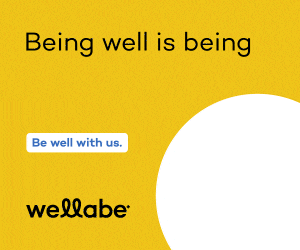It’s all about value

.floatimg-left-hort { float:left; } .floatimg-left-caption-hort { float:left; margin-bottom:10px; width:300px; margin-right:10px; clear:left;} .floatimg-left-vert { float:left; margin-top:10px; margin-right:15px; width:200px;} .floatimg-left-caption-vert { float:left; margin-right:10px; margin-bottom:10px; font-size: 12px; width:200px;} .floatimg-right-hort { float:right; margin-top:10px; margin-left:10px; margin-bottom:10px; width: 300px;} .floatimg-right-caption-hort { float:left; margin-right:10px; margin-bottom:10px; width: 300px; font-size: 12px; } .floatimg-right-vert { float:right; margin-top:10px; margin-left:10px; margin-bottom:10px; width: 200px;} .floatimg-right-caption-vert { float:left; margin-right:10px; margin-bottom:10px; width: 200px; font-size: 12px; } .floatimgright-sidebar { float:right; margin-top:10px; margin-left:10px; margin-bottom:10px; width: 200px; border-top-style: double; border-top-color: black; border-bottom-style: double; border-bottom-color: black;} .floatimgright-sidebar p { line-height: 115%; text-indent: 10px; } .floatimgright-sidebar h4 { font-variant:small-caps; } .pullquote { float:right; margin-top:10px; margin-left:10px; margin-bottom:10px; width: 150px; background: url(http://www.dmbusinessdaily.com/DAILY/editorial/extras/closequote.gif) no-repeat bottom right !important ; line-height: 150%; font-size: 125%; border-top: 1px solid; border-bottom: 1px solid;} .floatvidleft { float:left; margin-bottom:10px; width:325px; margin-right:10px; clear:left;} .floatvidright { float:right; margin-bottom:10px; width:325px; margin-right:10px; clear:left;}
A man came up to me during a break at a seminar and said, “I have a new closing method.”
I said, “Great! What is it?”
“We beat our customers over the head with a value stick until they close us and ask us to buy. We don’t have brochures, and the whole meeting is about how exactly we would deliver massive value to the client, all done in a friendly, professional manner. We give the clients a full strategic map of how they profit if we’re hired. They buy because they believe we are capable of implementing the plan we have offered.”
I smiled.
He continued, “At the end of our sales conversation, we have provided our customers with so much value and perceived value that they ask questions like ‘OK, what’s the next step?’ or ‘How do we get started?'”
NOTE WELL: This is a pretty interesting concept when you consider that 99 percent (and I may be a bit low on that number) of salespeople (you included) are trying to figure out some manipulative way of closing the sale or asking for it.
Think about it. Is it more powerful for you to ask for the sale, or for the customer to want to buy? Is it more powerful for you to ask for the sale, or for the customer to ask, “When can we get started?”
Are you willing to jump off the product pitch and price comparison proposal horse and buggy, and onto the value rocket ship?
VALUE is what you offer that you perceive is in favor of the prospective customers, combined with what the prospective customers actually perceive is in favor of them. Sometimes those are two very different perceptions.
What is your “value proposition”? Do you even have one? What are you saying to a prospect that goes beyond what you do and how you do it and what your product or service is, and how it works? Hard question. Harder answer.
BE AWARE: There are 10.5 key areas where value can be perceived:
1. Ease of doing business with you.
2. Ease of contact with you and anyone in your company.
3. Ease of use after purchase.
4. Increase in productivity for the customer.
5. Availability of service when the customer needs it.
6. Boost in customer morale after product or service is installed.
7. Reasonably affordable and market price aligned. NOT the cheapest – rather, the best value.
8. Additional profit to the customer (not savings of money). How does the customer really monetarily benefit from overall use?
9. Assurance to the customer, and perception by the customer that there is a perfect fit.
10. Assurance that there is no risk in doing business or purchasing. Otherwise stated as “their peace of mind.” Total reduction or elimination of their perceived risk in doing business with you. Without this, the first nine points don’t matter.
10.5. Continued value messages to help the customer AFTER the purchase has been made.
SALES REALITY: All prospects and customers want to know the same thing: What’s in it for me? How do I profit? And of course: How much is it? When these elements are part of an overall value presentation, you (the seller) win.
Most people buy what they PERCEIVE is best for themselves. They first look at the value and quality. How does this suit me, how does this feel, how comfortable am I with this (and this salesperson)? Or better stated: What is THE FIT?
Then they justify the price – or not. The decision to buy is made emotionally, and then justified logically.
BEWARE: Keep in mind that what I have just told you has NOTHING to do with your literature, your sales pitch, your sales techniques or your product description. It has everything to do with what the customer perceives will happen after taking ownership.
Jeffrey Gitomer can be reached by phone at (704) 333-1112 or by e-mail at salesman@gitomer.com. © 2010 Jeffrey H. Gitomer







